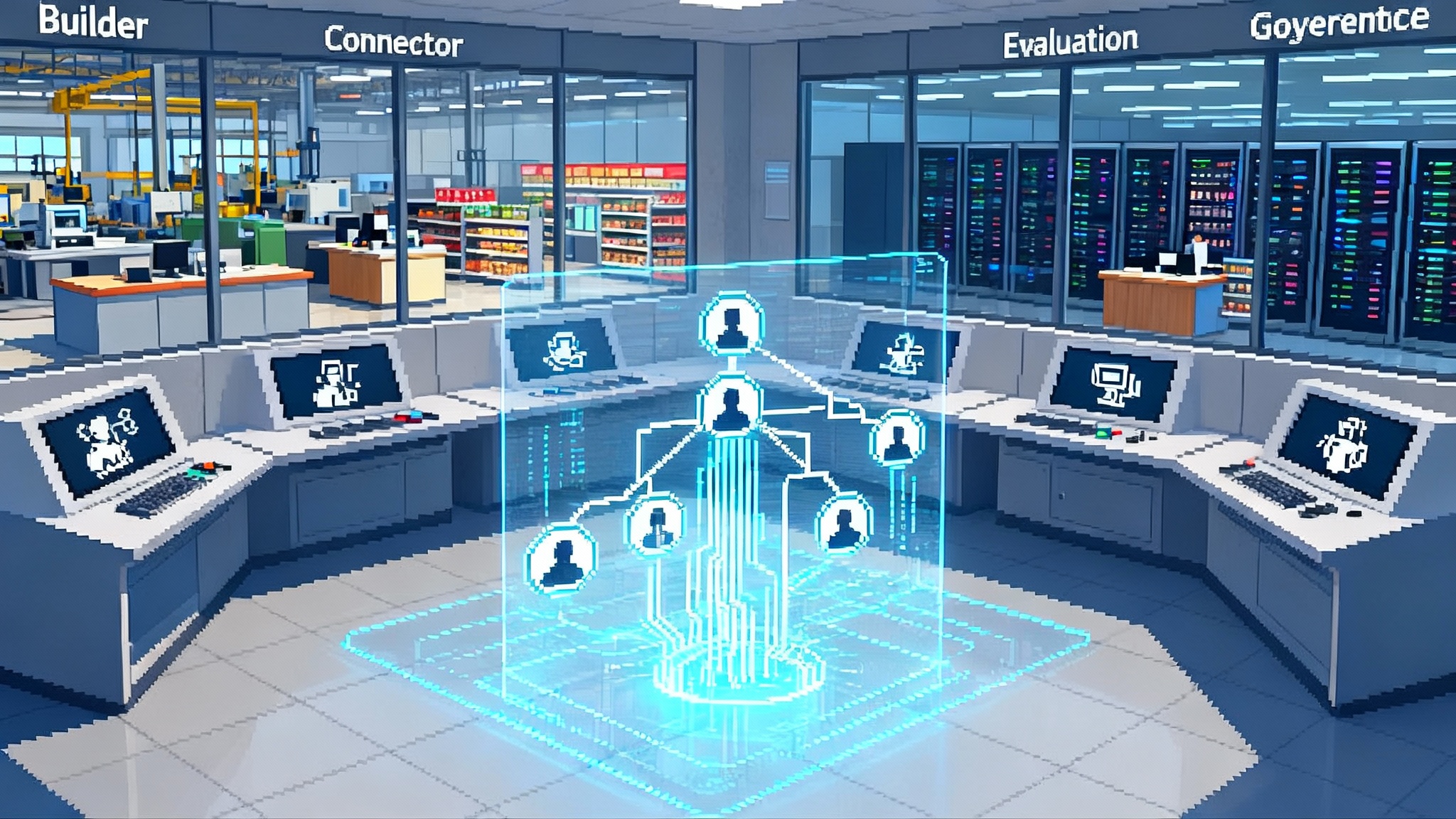The Consent Layer: AI’s Post Lawsuit Pivot to Licensed Training
A legal turning point is pushing AI from scraping to licensing. Here is how the consent layer restructures data, royalties, and product roadmaps across music, news, and code, plus a builder playbook for what to ship next.

The week the scrape-first era cracked
Between October 29 and October 30, 2025, a quiet assumption about artificial intelligence finally lost its grip. Universal Music Group and Udio ended their legal fight and revealed a licensing partnership for a new music creation and streaming platform trained on authorized catalogs. The deal put dates and dollars behind an idea that hovered over AI for two years. Training data is not just fuel. It is an asset with owners, rules, and prices that can be negotiated in advance.
Call this shift the consent layer. It is the idea that models at scale will sit on top of licensed data pipes and standardized payout rails rather than troves of scraped content. On October 16, Spotify announced collaborations with Sony Music Group, Universal, Warner Music Group, Merlin, and Believe to develop artist-first AI features. The message was explicit. New AI tools would be built through upfront agreements that respect copyright, give artists choice, and create new revenue streams. You can see this pattern in an official announcement of the UMG and Udio licensing deal and Spotify’s note on artist-first AI collaborations.
Meanwhile, YouTube continued rolling out AI features for music creators in 2025, from text-to-music tooling in Creator Music to experiments inside YouTube Music. Across these moves the pattern is clear. Licenses first, prompts second. The old tactic of crawl now and ask later is giving way to pre-cleared catalogs, tracking, and royalties by design.
Why this is a turning point, not a press cycle
Regulatory pressure and lawsuits created the urgency, but the pivot is bigger than compliance. A consent layer removes three chronic blockers that have slowed responsible AI products.
- Product risk: If your model trains on unknown or disputed data, every feature launch carries legal risk. Licensed inputs and attribution lower that risk so roadmaps do not stall in legal review.
- Distribution risk: Creators are distribution. When rights holders choose to participate, they become promoters of your tool, not adversaries. That shortens the distance between prototype and mainstream.
- Monetization risk: Without permission, there is no straightforward way to share revenue. With licenses, you can meter usage, pay into the right collection societies, and show creators exactly how they got paid.
Think of it like laying tracks before you run the train. It is slower on day one, but once the rails exist every new route gets cheaper, safer, and faster.
Royalty rails across three markets
The consent layer is not only a music story. We are watching the same model in news and code.
Music: from mimicry to metering
The Universal and Udio settlement offered a blueprint. Train on authorized recordings and compositions. Keep output in a controlled environment. Fingerprint content so that rights can be recognized. Give artists choice and share revenue. Within hours of the announcement, Udio adjusted its product to remove downloads while it migrates to the licensed platform. That one change signals a deeper move from free-floating audio files to a streaming environment where usage is measured and paid.
Spotify’s October label collaborations move on a parallel track. The company emphasized four principles: upfront licensing, artist choice in participation, fair compensation, and deeper artist to fan connection. Taken together, Universal plus Udio on the creation side and Spotify with labels on the distribution side map out both halves of a music marketplace for AI. A licensed creation platform feeds a licensed streaming platform, with royalties addressed at the source and tracked to each transformation.
YouTube’s rollouts round out the picture with creator tools that live close to where video is published and monetized. A text prompt inside Creator Music that yields an instrumental is not just a convenience. It is an integration point where rights can be attached, tracked, and paid out within the same ecosystem that hosts the content. As YouTube experiments with AI hosts and new audio formats, the platform is learning how to surface disclosures, route payments, and give creators controls without breaking user experience.
What to expect next in music:
- Catalog toggles: Artists and labels will opt in or out at a catalog, album, or track level, including style transfer and voice cloning permissions. Expect granular switches for commercial use, fan remixes, and noncommercial experimentation.
- Payout transparency: Dashboards that show training usage, derivative usage, and streaming usage will become standard. Think of it like a combined statement that shows how inputs and outputs turn into money.
- Identity protection: Fingerprinting and watermarking at training time and generation time will be required by partners. The goal is to prevent impersonations, flag unlicensed uses, and credit the right people when styles are referenced. For a deeper dive on provenance patterns, see how the reality layer after deepfakes reshapes trust and verification.
News: negotiated archives replace web crawls
In journalism, the consent layer is already taking shape. Over the last 18 months, model providers signed content agreements with major publishers. Terms vary, but the logic is the same. Providers get structured access to current and archival reporting. Publishers get distribution, attribution, and payments. Most importantly, these deals reduce product risk because the rules for training, display, and caching are written down instead of being implied.
The alternatives are getting more costly. Courts have allowed significant parts of lawsuits from publishers to proceed, and a landmark settlement between an AI company and authors put a per book price on past uses while clarifying that future uses must be acquired legally. Whether or not every case lands the same way, the direction is clear. Negotiated access is faster and more durable than scraping when you plan to ship widely and charge for it. The next step is to connect these agreements to real time metering so that synthesis and quotation can be logged and paid like any other use.
What to expect next in news:
- Model ready archives: Publishers will add structured feeds that include licenses, embargoes, and content credentials so providers can filter and prove compliance.
- Real time metering: When a model synthesizes or quotes journalism, that event will be logged against a contract. Publishers will see per outcome attribution and payouts in dashboards.
- New formats: Summaries and explainers coauthored by newsrooms and model providers will appear inside consumer products with clear on screen credit and a route back to the source publication. For distribution dynamics, see our view on how AI mode rewrites search.
Code: from public by default to permission aware
Developers felt the first wave of AI inside their editors. That phase leaned heavily on permissive code and public repositories. The next phase is permission aware. The partnership between Stack Overflow and OpenAI in May 2024 exemplified the pattern. It gave a model provider an authorized path to a large body of technical questions, answers, and snippets, with attribution back to the community. On the open model side, initiatives like StarCoder trained on permissively licensed repositories with opt out mechanisms and attribution tracing. These choices are not only ethics. They reduce risk for companies that need to ship AI coding tools into regulated environments.
Expect the same rails here as in music and news:
- Provenance by default: Code suggestions will carry machine readable provenance and license context. That will allow teams to set policies like no copyleft into production and enforce them automatically. Pair this with environments where attested AI becomes default so that provenance is backed by execution proof.
- Usage classes: Enterprises will license training on their own private repos with strict separation, then selectively turn on suggestions sourced from public licensed pools for noncritical paths.
- Registry signaling: Package managers and code hosts will expose trainable tags and price points. Authors of high signal repositories can opt in with clear terms and get paid when their code improves a model’s performance on defined tasks.
Why licensed training scales faster
Scraping can feel fast because it avoids negotiation. In practice it slows you down later. Consent driven design often accelerates growth once you decide to build a real product.
- Lower friction with creators: When a product is built with consent at the core, the people you need to win over become collaborators. That flips social sentiment, opens doors to pilots, and lowers the odds that a launch is boycotted or buried in criticism.
- Simpler enterprise procurement: Business and legal teams increasingly ask for a model bill of materials that shows where training data came from and what the rights are. Licensed inputs answer those questions in one document.
- Fewer feature holdbacks: Teams stop hedging on speed and quality to avoid legal land mines. You can ship watermarking, content identification, and remixing features that creators actually want because rights are pre cleared.
There is also a moat argument. For two years, many builders treated web crawl scale as the moat. The consent layer suggests the moat is shifting to who can assemble the best negotiated catalogs, with the clearest rights, the best price discovery, and the strongest creator relationships. That advantage compounds. Once an artist, publisher, or maintainer trusts your rails, the next deal is faster and cheaper. In other words, catalogs become infrastructure and access becomes a defensible position.
What builders should do next
You do not need a thousand lawyers to start. You do need to design for consent as a system, not a bolt on.
1) Treat datasets like catalogs
- Curate by rights, not just by tokens. Mark every item with license, ownership, and jurisdiction.
- Add toggles for rightsholders to change participation without breaking your pipelines. Respect artist or publisher switches at the catalog, album, track, section, or repository level.
- Keep a clean separation between licensed pools. If you mix, you must be able to account for who contributed signal to which outputs.
2) Build a rights router
- Map identifiers to your use cases. In music that means ISRC and ISWC. In news it means article identifiers and content credentials. In code it means repository URLs, commit IDs, and package names. Your router should translate user actions into the right logs and royalty events.
- Add content fingerprinting at both ends. Fingerprint inputs when you ingest them and outputs when you generate them. That gives you a way to detect impersonation and assign credit.
3) Ship a transparency surface
- Give creators dashboards that show where and how their content informed model behavior. Include training participation, derivative usage, and payouts. Make switching participation on or off instant.
- Publish a model bill of materials. List your licensed sources and what they cover. If you must use public data, disclose how you filtered it and what options exist for opting out.
4) Experiment in sandboxes
- For sensitive rights like voice cloning, run closed pilots with small catalogs and detailed consent. Use those learnings to draft your public terms.
- Keep user uploaded content inside controlled environments until you have reliable fingerprinting, attribution, and payout flows.
What this means for creators
Artists, journalists, and developers have rightfully demanded choice, credit, and compensation. The consent layer does not mean saying no to AI. It means using your leverage to shape it.
Three practical moves:
- Negotiate clear participation tiers. Example: allow training but disallow voice cloning. Or allow style transfer for fans inside a specific app but not for commercial use elsewhere.
- Ask for visibility. Do not accept black box statements. Ask for activity logs, attribution rules, and payout schedules that you can audit.
- Anchor on standards. Use existing identifiers, watermarking, and content credentials so your work is discoverable and compensable wherever it travels.
The policy and standards backdrop
Standards bodies and industry groups now have the opportunity to turn bespoke legal documents into reusable patterns. Expect more adoption of content credentials for provenance, stronger use of music metadata like ISRC and ISWC in AI contexts, and model reporting frameworks that let auditors verify training sources and guardrails. Platforms will seek safe harbors in exchange for adopting those standards and honoring do not train signals. Insurers will begin to price premiums around whether a product runs on licensed catalogs with watermarking and attribution.
Open questions to watch
- Price discovery: What does a fair training rate look like for a platinum album versus a niche repository that moves a benchmark by five points. Expect auctions, performance based bonuses, and floor rates to emerge.
- Model leakage: Even with clean inputs, how do we prove that outputs do not recreate protected content. Expect a combination of output filters, watermarking, and auditing.
- Interoperability: Can credits move across platforms when a fan remix travels from one app to another. Clearinghouses will form to route royalties across ecosystems, with standardized identifiers to bridge them.
Conclusion: consent as an accelerant
The late October announcements were not the end of a fight. They were the start of a market. Universal and Udio sketched how to license training and contain output so that artists get paid. Spotify and labels showed how to line up incentives for the next wave of consumer features. YouTube demonstrated how to build tools where content is already published and monetized. News organizations and developer communities are carving similar paths through partnerships that blend attribution, revenue, and access.
The takeaway for anyone building models is simple. The fastest route from prototype to product runs through permission. The scrape first playbook created an arms race of lawsuits and workarounds. The consent layer creates something more durable. It turns catalogs into infrastructure, creators into allies, and royalties into rails. Once those rails exist, products can move faster and further because the people who power them are on board.








